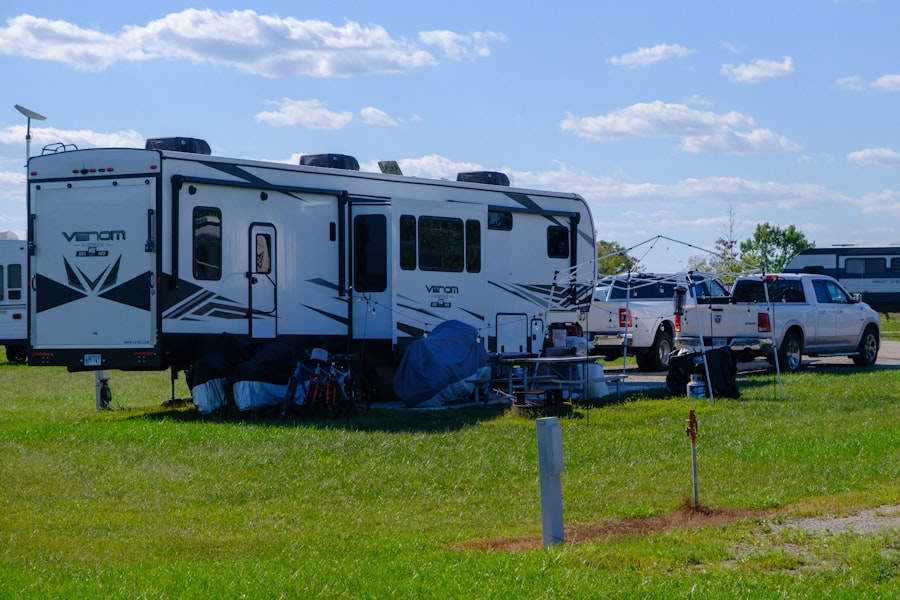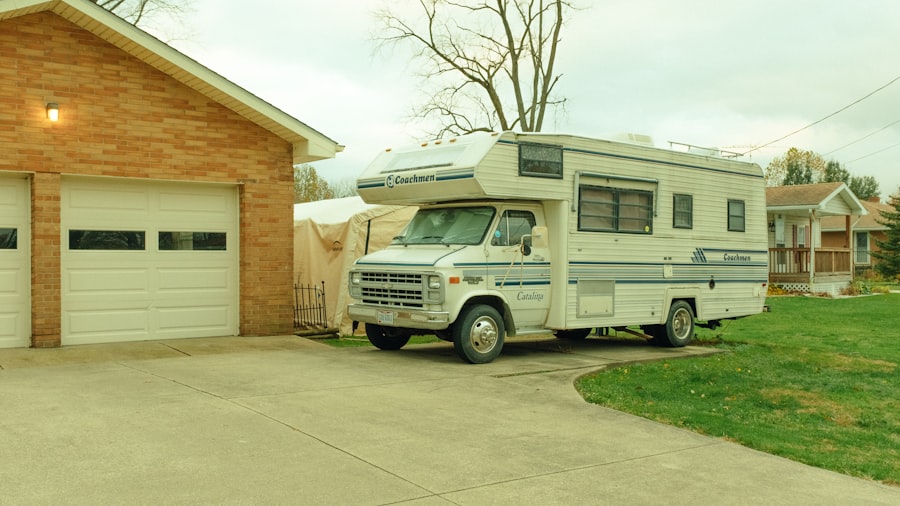The concept of mobile homes can be traced back to the early 20th century, when the first travel trailers were designed for recreational use. These early models were often constructed from lightweight materials, allowing for easy transport. However, it wasn’t until the post-World War II era that mobile homes began to gain popularity as a permanent housing solution.
The housing shortage that followed the war, coupled with the rise of the automobile culture, led to an increased demand for affordable and flexible living options. In the 1950s, the term “mobile home” was officially adopted, and manufacturers began producing units that were more spacious and equipped with modern amenities. By the 1960s and 1970s, mobile home parks began to emerge as a viable housing option for many Americans.
These parks provided a sense of community while offering residents the freedom to own their homes without the burdens of traditional real estate. The Federal Housing Administration (FHA) played a significant role in this transformation by providing financing options specifically for mobile homes, making them more accessible to a broader demographic. As a result, mobile home parks proliferated across the United States, particularly in suburban areas where land was more affordable.
This period marked a significant shift in how people viewed mobile homes, transitioning from temporary accommodations to legitimate housing solutions.
Key Takeaways
- Mobile home trailer parks have a long history dating back to the 1920s, when they were initially created to provide affordable housing for workers and travelers.
- Living in a mobile home trailer park offers benefits such as lower cost of living, flexibility in location, and a sense of community among residents.
- The community atmosphere in mobile home trailer parks is often tight-knit, with residents forming strong bonds and supporting each other.
- Mobile home trailer parks are known for their affordability, offering a lower cost of living compared to traditional housing options.
- Amenities and services available in mobile home trailer parks can include recreational facilities, maintenance services, and community events, enhancing the overall living experience for residents.
The Benefits of Living in a Mobile Home Trailer Park
Living in a mobile home trailer park offers numerous advantages that appeal to a diverse range of individuals and families. One of the most significant benefits is the sense of autonomy that comes with owning a mobile home. Unlike traditional rental properties, where tenants are often subject to strict rules and regulations, mobile home owners have greater control over their living spaces.
They can personalize their homes to reflect their tastes and preferences, creating a unique environment that feels truly theirs. This autonomy fosters a sense of pride and ownership that can be deeply fulfilling. Additionally, mobile home parks often provide a more relaxed lifestyle compared to urban living.
Many parks are situated in tranquil settings, surrounded by nature or open spaces, allowing residents to enjoy outdoor activities such as gardening, walking, or simply relaxing in their yards. This connection to nature can significantly enhance one’s quality of life, promoting mental well-being and reducing stress levels. Furthermore, the slower pace of life in these communities can lead to stronger relationships among neighbors, as residents often have more opportunities to interact and engage with one another.
The Community Atmosphere of Mobile Home Trailer Parks

One of the defining characteristics of mobile home trailer parks is their strong sense of community. Residents often form close-knit relationships with their neighbors, creating an environment that fosters camaraderie and support. This communal atmosphere is particularly beneficial for families and individuals who may feel isolated in more traditional housing situations.
In many parks, social events such as potlucks, holiday celebrations, and community clean-up days are organized, encouraging residents to come together and build connections. Moreover, the shared experience of living in a mobile home park can create a unique bond among residents. Many individuals choose this lifestyle for similar reasons—affordability, flexibility, or a desire for a simpler way of life—leading to shared values and interests.
This commonality can result in lasting friendships and a network of support that extends beyond mere neighborly interactions. In times of need, residents often rally together to assist one another, whether it’s helping with home repairs or providing emotional support during difficult times.
The Affordability of Mobile Home Trailer Parks
| City | Average Monthly Rent | Occupancy Rate |
|---|---|---|
| New York | 1200 | 95% |
| Los Angeles | 1000 | 85% |
| Chicago | 900 | 90% |
Affordability is one of the primary reasons many individuals and families opt for mobile home living. Compared to traditional single-family homes or apartments, mobile homes typically come with a lower price tag, making them an attractive option for those on a budget. The cost of purchasing a mobile home can vary widely depending on factors such as size, age, and location; however, many models are available at prices significantly lower than conventional housing options.
This affordability allows individuals to invest in their own homes without incurring crippling debt. In addition to lower purchase prices, living in a mobile home park often results in reduced monthly expenses. Many parks offer lot rent that is considerably less than typical mortgage payments or rent for traditional apartments.
Furthermore, mobile homes tend to be more energy-efficient than larger houses, leading to lower utility bills. For retirees or those on fixed incomes, this financial relief can be particularly beneficial, allowing them to allocate resources toward other essential needs or leisure activities.
The Amenities and Services Available in Mobile Home Trailer Parks
Mobile home trailer parks frequently provide a range of amenities and services designed to enhance residents’ quality of life. Many parks feature community centers equipped with recreational facilities such as swimming pools, fitness rooms, and game areas. These shared spaces encourage social interaction among residents and provide opportunities for physical activity and relaxation.
Additionally, some parks offer organized activities such as yoga classes or movie nights, further fostering community engagement. Beyond recreational amenities, many mobile home parks also provide essential services that simplify daily living. For instance, on-site maintenance staff can assist with repairs or landscaping needs, alleviating some of the burdens associated with homeownership.
Some parks even offer security services or gated access for added peace of mind. These conveniences contribute to a hassle-free lifestyle that allows residents to focus on enjoying their homes and communities rather than worrying about upkeep.
The Flexibility and Freedom of Mobile Home Living

One of the most appealing aspects of mobile home living is the inherent flexibility it offers. Unlike traditional homes that are fixed in place, mobile homes can be relocated if necessary—whether due to job changes, family needs, or personal preferences. This mobility allows residents to adapt their living situations without the constraints typically associated with real estate transactions.
For those who value freedom and spontaneity in their lives, this aspect of mobile home living can be particularly liberating. Moreover, the flexibility extends beyond physical relocation; it also encompasses lifestyle choices. Mobile home parks often attract diverse populations ranging from young families to retirees seeking a simpler life.
This diversity creates an environment where individuals can choose how they want to live without feeling pressured by societal norms or expectations. Whether one prefers a quiet existence or an active social life filled with community events, mobile home living accommodates various lifestyles while providing the freedom to make personal choices.
The Environmental Impact of Mobile Home Trailer Parks
The environmental impact of mobile home trailer parks is an increasingly relevant topic as society becomes more conscious of sustainability issues. Mobile homes are generally smaller than traditional houses, which means they require fewer resources for construction and maintenance. This smaller footprint can lead to reduced energy consumption and lower greenhouse gas emissions over time.
Additionally, many modern mobile homes are designed with energy efficiency in mind, incorporating features such as better insulation and energy-efficient appliances that further minimize their environmental impact. Furthermore, mobile home parks often promote sustainable practices within their communities. Many parks encourage residents to engage in eco-friendly initiatives such as recycling programs or community gardens that promote local food production.
By fostering a culture of sustainability among residents, these parks contribute positively to environmental conservation efforts while enhancing the overall quality of life within the community.
The Future of Mobile Home Trailer Parks
As housing markets continue to evolve and affordability becomes an increasingly pressing issue, the future of mobile home trailer parks appears promising. With rising property prices making traditional homeownership unattainable for many individuals and families, mobile homes offer an alternative that aligns with contemporary needs for affordable housing solutions. Additionally, as urban areas become more congested and expensive, the appeal of mobile home living—characterized by flexibility and community—will likely continue to grow.
Innovations in design and technology are also shaping the future landscape of mobile home parks. Manufacturers are increasingly focusing on creating modern units that incorporate sustainable materials and smart-home technology, appealing to environmentally conscious consumers seeking convenience and efficiency. As these trends gain traction, mobile home parks may evolve into vibrant communities that not only provide affordable housing but also embrace modern living standards while fostering strong social connections among residents.

